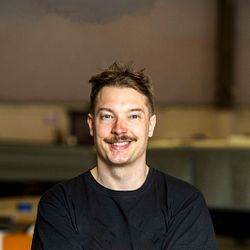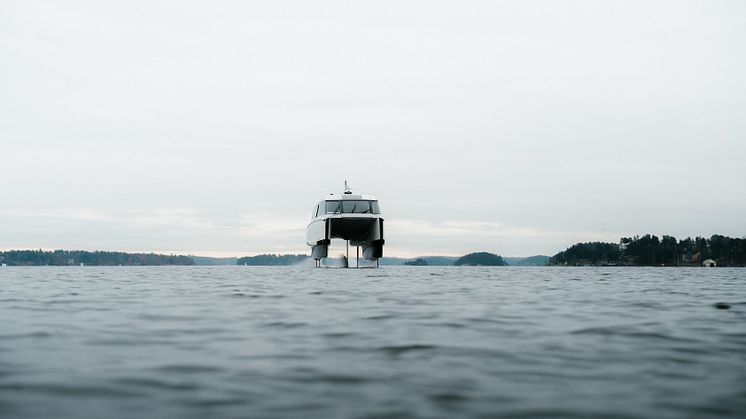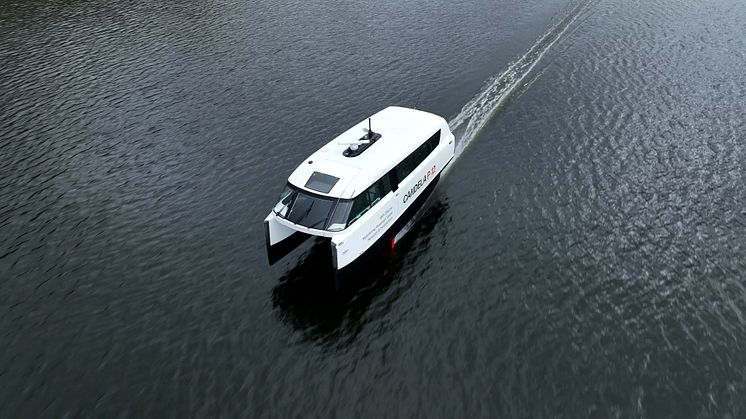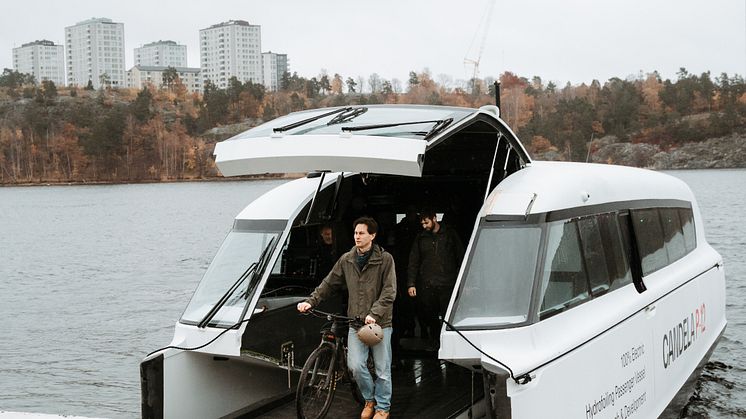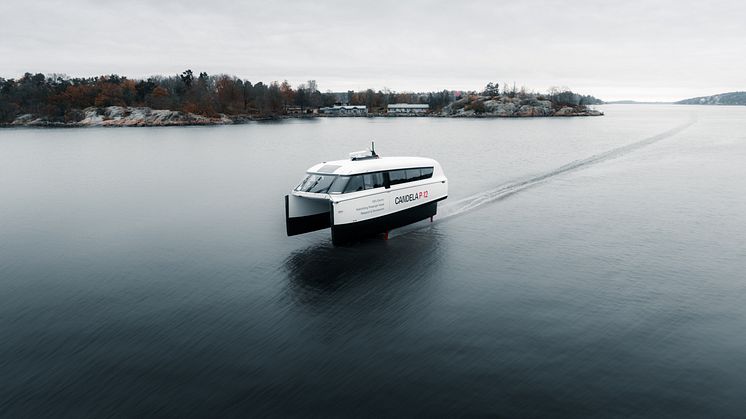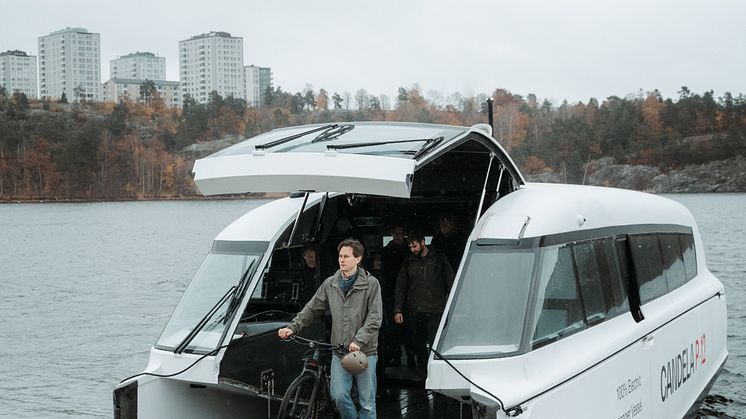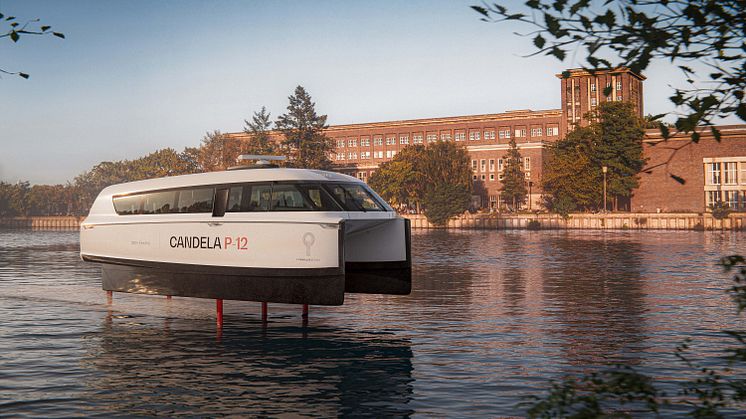
Press release -
Berlin Gets Flying Electric Ferry
Traveling from Berlin’s eastern city center to Oberschöneweide in just ten minutes? That’s impossible by car or S-Bahn. However, Swedish tech company Candela today announced the sale of a Candela P-12 electric hydrofoiling ferry to Funkhaus/Reederei Riedel, marking a watershed moment for zero-emission transport in Germany.
The P-12 Shuttle electric ferry line is planned to connect the East Side Gallery, near Ostbahnhof, with the cultural hub Funkhaus. The electric hydrofoil catamaran, which can travel at 25 knots across the Spree, is the fastest electric ship in the world and the first of its kind in Germany.
"Berlin is a city with a lot of water, but this is hardly used for transport. We want to open up waterways for fast, emission-free transport. We need that if we want to reduce emissions and congestion on the roads," said Brigitte Junker from Candela.
The Swedish ship manufacturer Candela is a pioneer in sustainable water transport and the world’s first manufacturer of electric hydrofoil vessels. These ships utilize computer-stabilized underwater wings to raise their hulls above the water, cutting energy consumption by 80% compared to conventional ships. The P-12 fast electric ferry, which is set to debut in Stockholm’s public transport system this fall, has been dubbed a "game changer" by the maritime industry, as it is the first electric vessel with both long range and high speed, thanks to its efficiency. But for city waterways, the most important aspect of the hydrofoil technology is the lack of damaging wakes, which in Stockholm has earned it an exemption from speed limits that other vessels must adhere to.
In Berlin, the vessel has been purchased by Funkhaus/Reederei Riedel, which already operates a fleet of shuttle vessels within the city.
"We would start with an hourly service," said Uwe Fabich, the owner of Reederei Riedel and Funkhaus, a cultural hub and popular venue for concerts, festivals, and other cultural events. With a ten-minute journey per route, the schedule could be expanded to two trips per hour in each direction.
The issue with Berlin, as with other major cities, is rush hour traffic, says Uwe Fabich. Those driving from the center to the Funkhaus must endure heavily congested streets.
"There's always a traffic jam. Public transportation isn't much better. Tram line 21, which heads in this direction, is one of the few Berlin tram lines with a 20-minute frequency. After getting off, there’s still a long walk to the Funkhaus," says Uwe Fabich.
This is how the idea to develop the area via waterway came about. The Reedrei Riedel and Funkhaus are directly on the river. With the P-12, investments in adapting dock infrastructure and charging will be negligible, as the vessel’s adjustable bow ramp can handle existing dock heights from 0.2m to 2m high. Its low energy use enables the P-12 to replenish its battery from a conventional car DC charger in just an hour.
“Operating costs would be 90 percent lower than diesel ships due to the low energy consumption and our maintenance-free electric C-POD motors,” says Brigitte Junker.
The high-speed ferry is also intended as a showcase for Berlin. "It would be a perfect connection to the outer areas," says Fabich. Where the Spree and other waterways are wide enough, it could successfully compete with other modes of transport.
Berlin has a long history of water transport. Since the 19th century, steamships have carried Berliners and Berlin tourists through the city. It is one of the most beautiful ways to get to know Berlin, yet today it is mostly unused for public transport.
“With the hydrofoil technology, we hope to change this and use mankind’s oldest transport infrastructure for fast, zero-emission commuting,” Brigitte Junker concludes.
Related links
Topics
Stockholm-based Candela Technology AB is the world leader in hydrofoiling electric vessels. The company was founded in 2014 by engineer and business leader Gustav Hasselskog with the mission to accelerate the world's transition to fossil fuel-free lakes and oceans by developing electric vessels that outperform those powered by fossil fuels.
Candela's watercraft have wings (hydrofoils) that lift the hull above the water and reduce friction, using 80% less energy than conventional ships at high speed. This technology allows for long-range water travel solely on battery power, a first in the industry. Candela's hydrofoils also enable operators to transition to sustainable fleets by providing up to 50% lower operational costs.
At the heart of Candela's hydrofoil tech stack is the Flight controller, which automatically stabilizes the vessel during flight by regulating the foils, using sensors that gauge wave height and wind speed, among other factors. Even in rough weather, passengers experience 90% less g-forces than they would on a traditional boat. All Candela vessels are fully connected and receive over-the-air updates.
After five years of research and development, Candela began producing the world's first electric hydrofoil leisure boat in 2019, the Candela C-7 open "roadster of the seas". This was followed in 2022 by the high-volume market Candela C-8, which was delivered to the first customers in spring 2023. Over 150 C-8 units have been sold to date, and the vessel has been lauded as a "game changer" by Motorboat and Yachting magazine, winning numerous awards including the 2022 European Powerboat of the Year award for its superior seakeeping, long range, and high speed.
In 2023, Candela launched its first commercial passenger vessel, the Candela P-12 Shuttle ferry. It is the fastest and longest-range electric ship ever built, with a top speed of 30 knots and a range of 40 nautical miles at 25 knots. It is also the most energy-efficient fast ship ever made in its size class. Substantial operational cost savings are expected. The first unit enters service in Stockholm's public transport system in 2024.
Candela is a technology company with headquarters in Stockholm, Sweden, employing over 200 engineers, technicians, and production staff. The company develops the entire tech stack, from the C-POD motor to the control system and carbon fiber hulls, in-house. Candela's two wholly-owned factories in Stockholm, Sweden, produce the Candela C-8 and P-12 vessels. The company also has leisure boat resellers in 12 countries and wholly-owned sales offices in San Francisco, USA, and Cannes, France.

